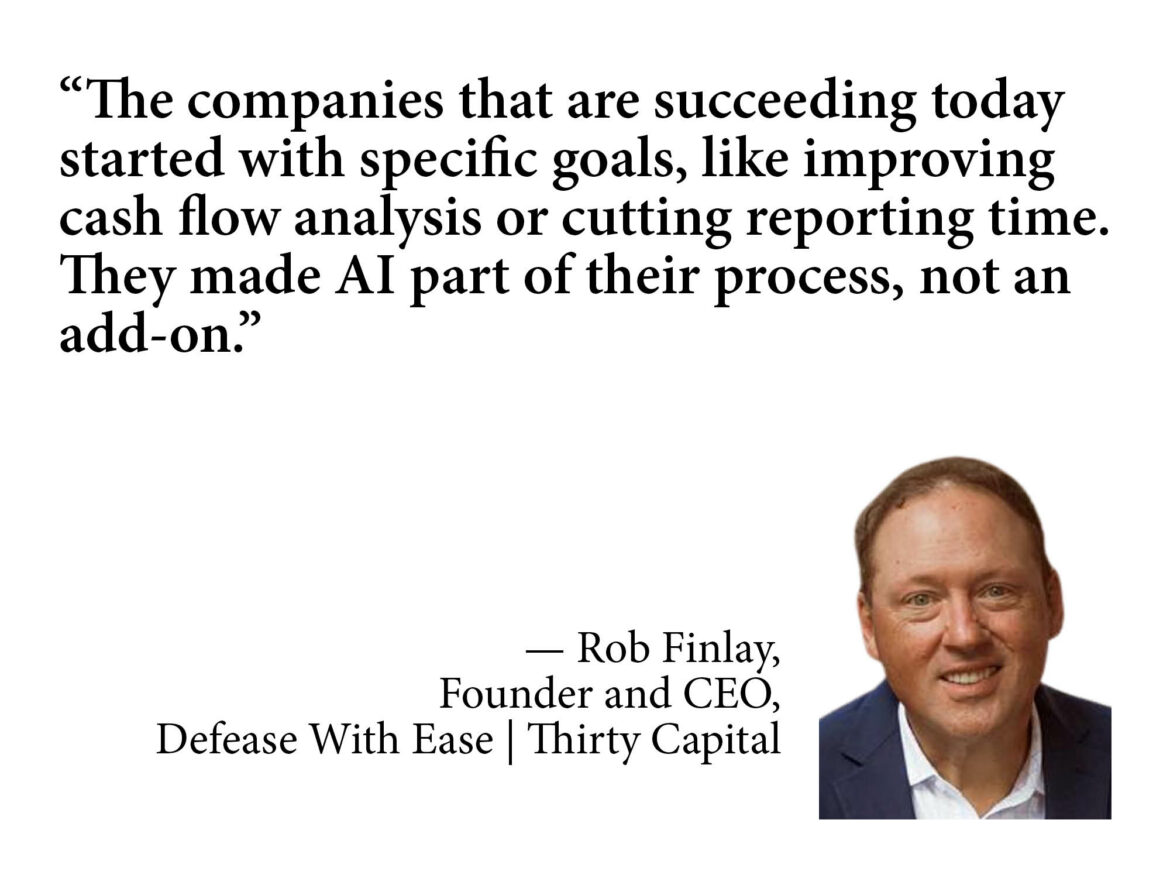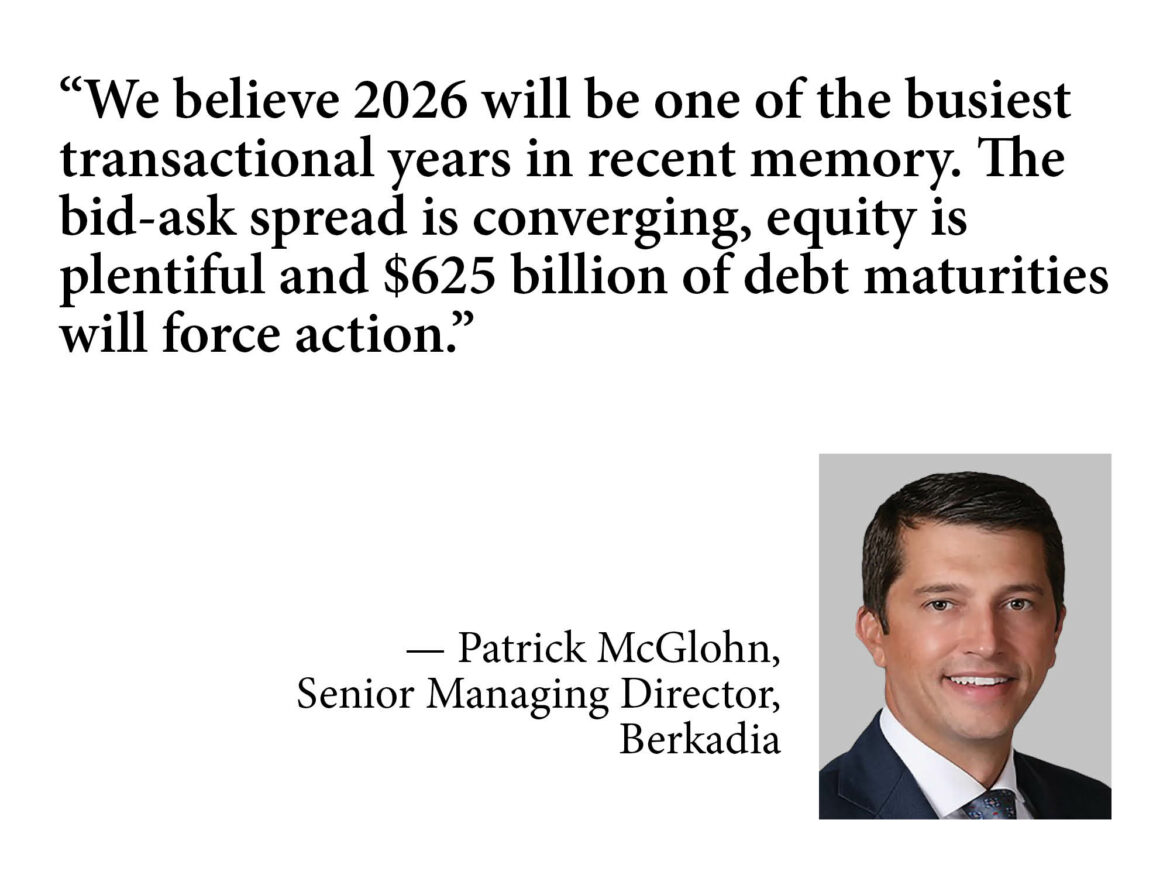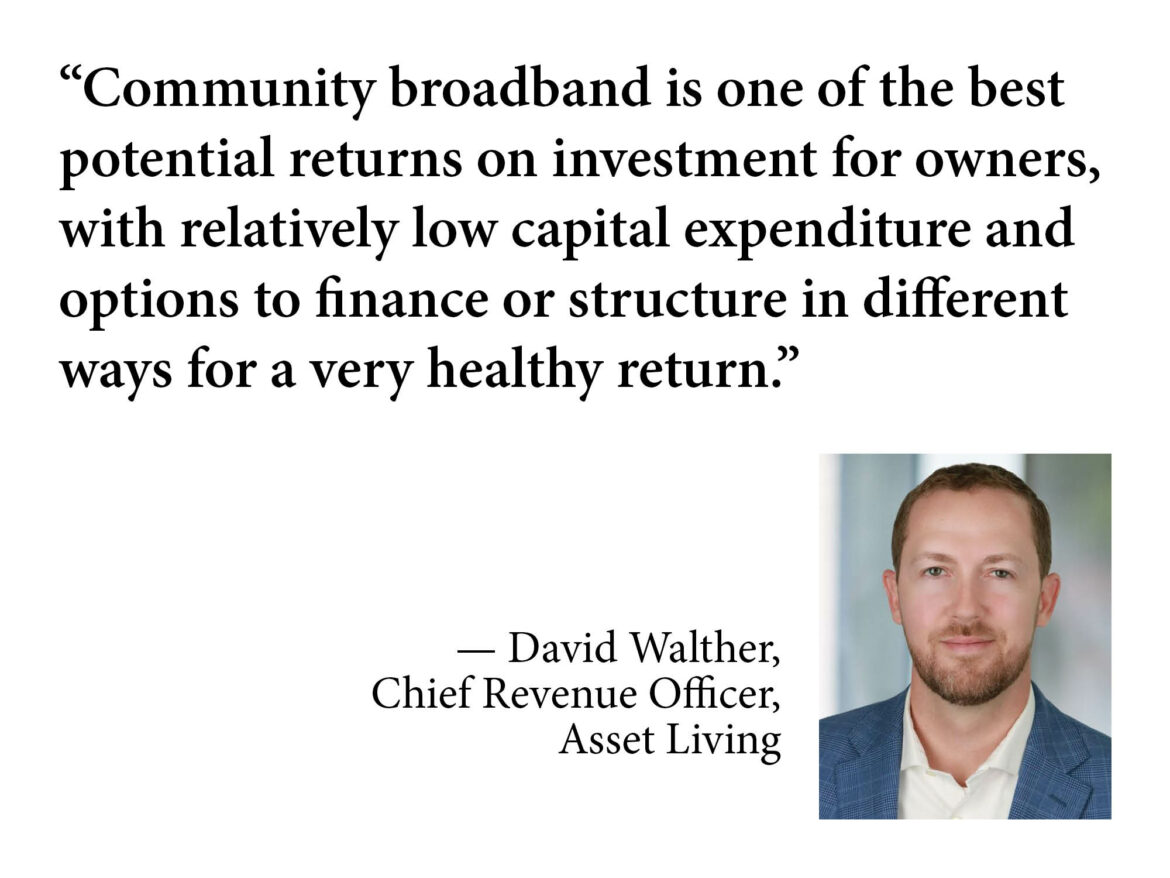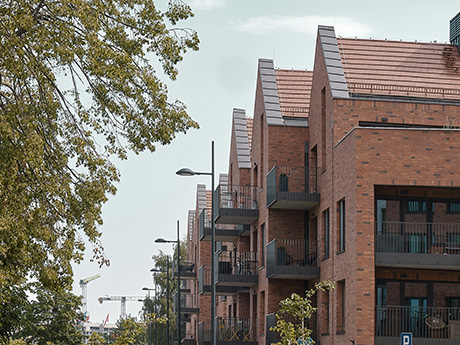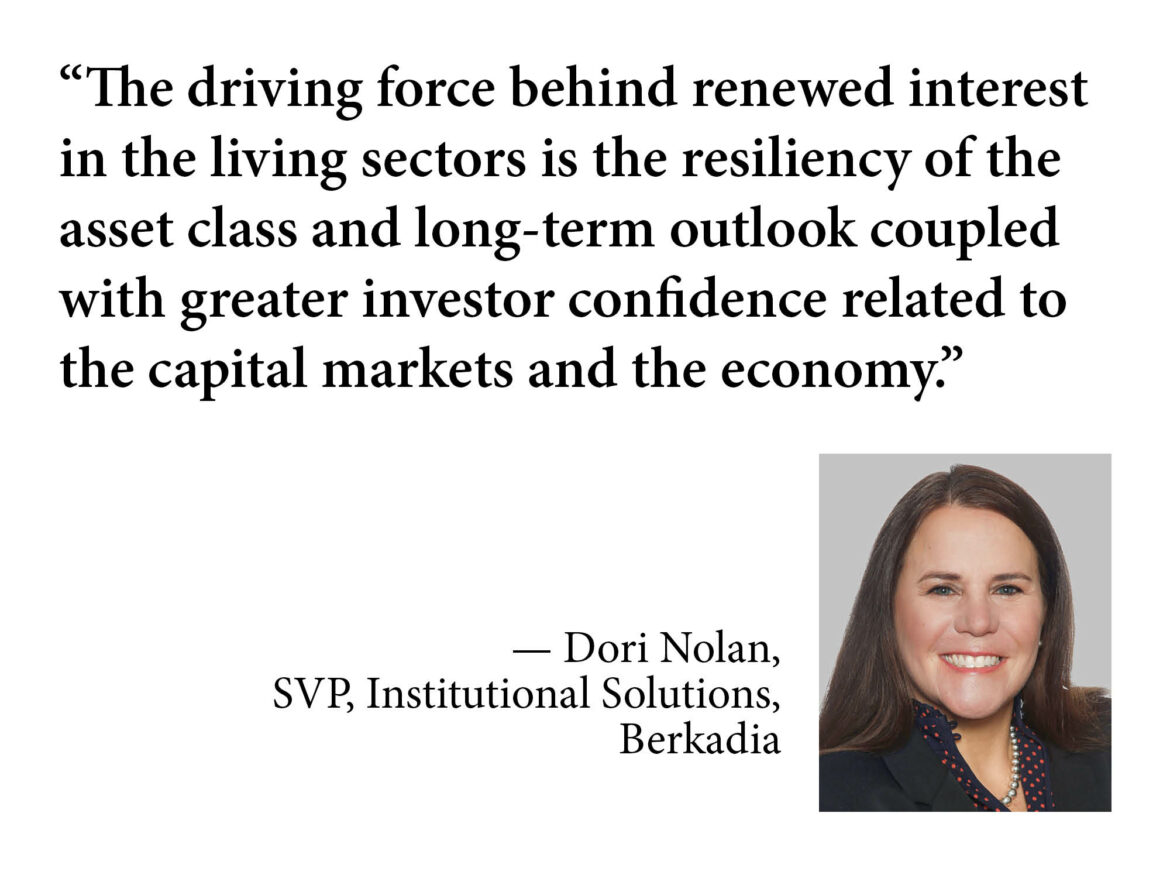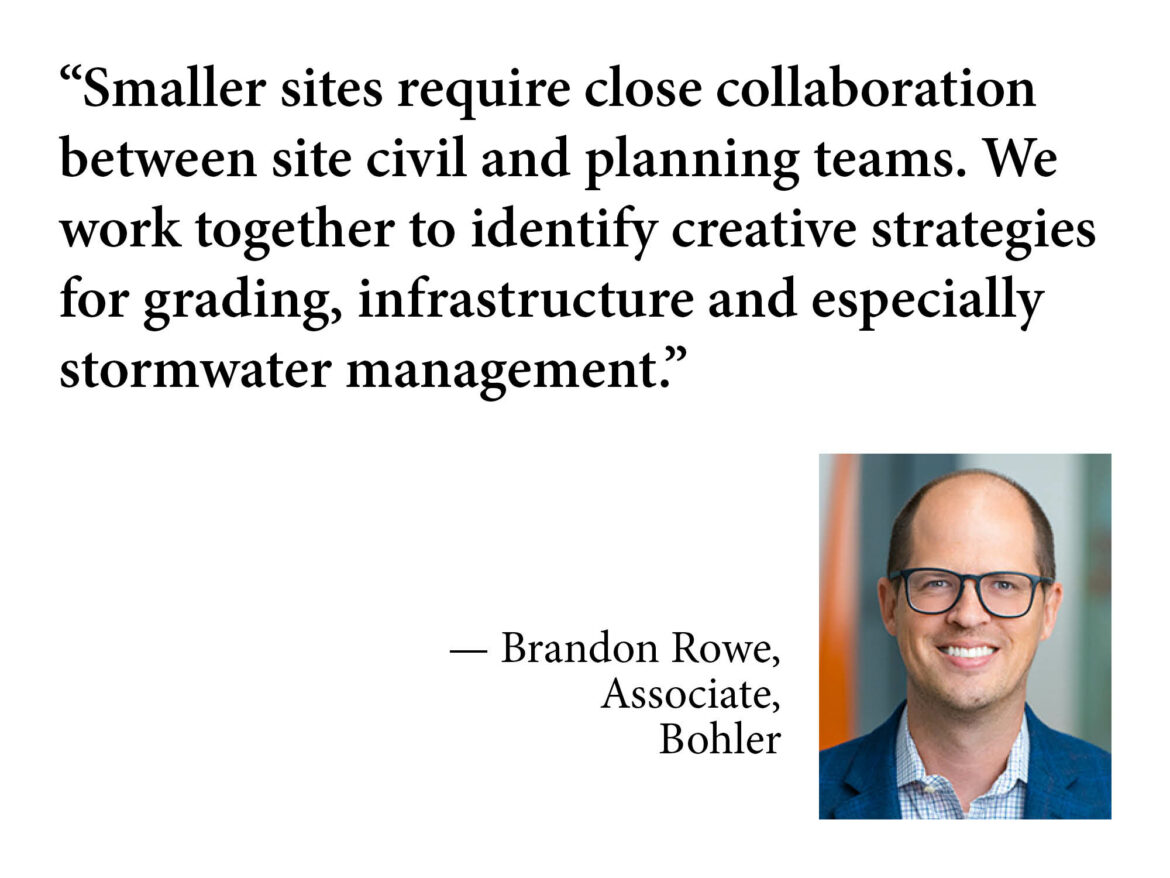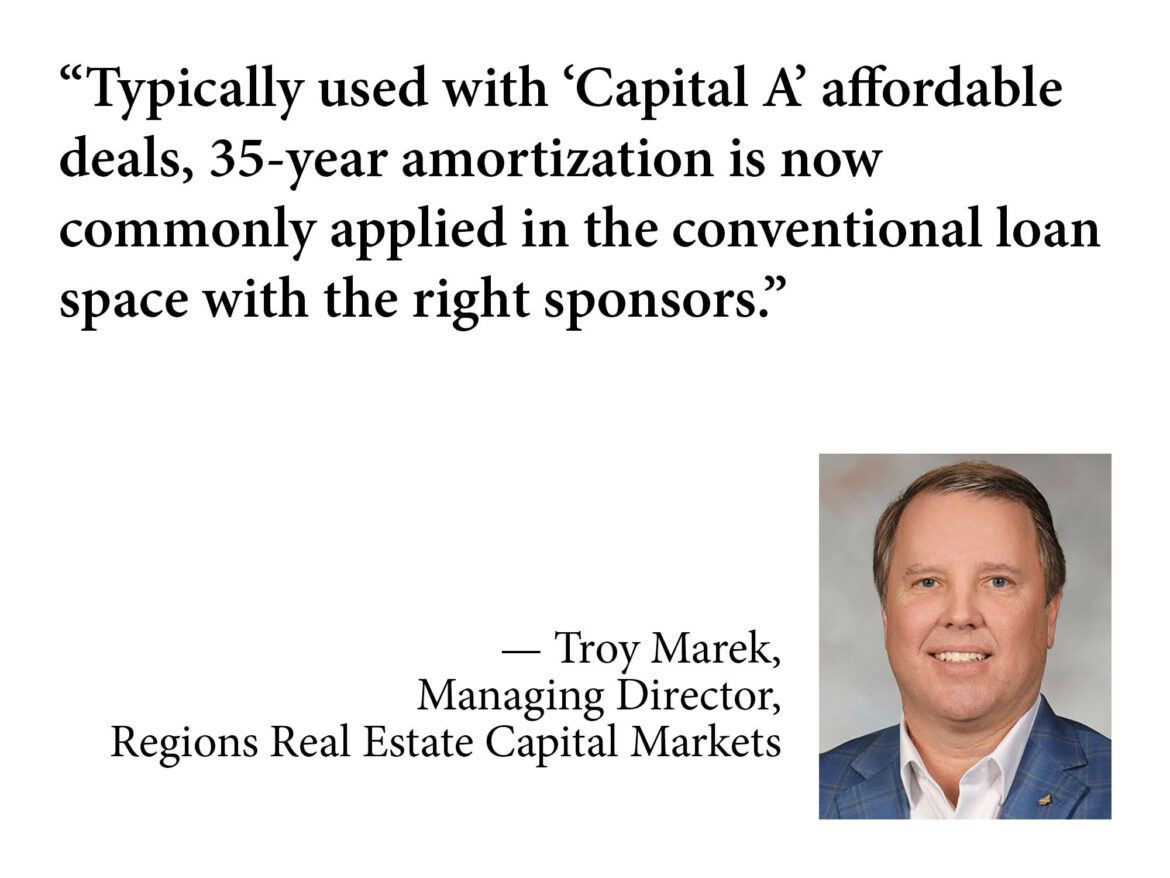Commercial real estate is in the middle of one of its biggest transitions. For years, the challenge was finding data. Now, the challenge is knowing what to do with it. Artificial intelligence (AI) is starting to change that. The conversation has shifted from if we should be using AI to how we can use it in a way that actually improves business outcomes. REBusinessOnline recently spoke with Rob Finlay, founder and CEO of Defease With Ease | Thirty Capital, and Trevor Albarran, VP of product at Lobby AI, about how AI is changing decision-making in commercial real estate (CRE), what early adopters have learned and what leaders should be focusing on next. REBusinessOnline (REBO): What’s the biggest opportunity facing CRE executives today? Rob Finlay: It depends on the context, but right now, AI is the most powerful tool a real estate executive can have in their arsenal. AI finally gives principals — the people paid to think — the space to actually do that. When I started in real estate, I was paid to do. But as my role evolved, my value shifted to thinking — being strategic, motivating teams, and making high-level decisions. AI amplifies that ability. It takes …
Content Partner
Build-to-RentContent PartnerFeaturesIndustrialLoansMidwestMultifamilyNortheastRetailSelf-StorageSoutheastTexasWestern
Capital Returns as 2025 Signals a Market Reset
By Patrick McGlohn, senior managing director, Berkadia After two years of caution and recalibration, capital is flowing back into commercial real estate. The bid-ask gap between buyers and sellers is narrowing, underwriting assumptions are stabilizing and both equity and debt investors are once again finding common ground. At Berkadia, we’re seeing equity move from the sidelines to the playing field, selectively, but decisively. Equity’s Comeback: Selective, but Strong Private equity and institutional investors are increasingly re-entering the market, with activity strongest in the “Smile States,” stretching from Northern Virginia to the western states and extending into major cities like Chicago. Much of the capital is chasing value-add and opportunistic plays rather than core, stabilized assets. Over the past couple of years, many equity investors would only touch preferred equity because of valuation uncertainty, but now we’re seeing common equity return in a meaningful way. The change reflects both greater pricing clarity and a collective sense that the bottom of the market cycle has passed. Navigating the Wall of Maturities The looming wall of debt maturities remains a defining storyline for 2025 and beyond. Nearly $950 billion in commercial mortgages matured in 2025 — roughly 20 percent of all outstanding commercial …
AcquisitionsContent PartnerDevelopmentFeaturesIndustrialLeasing ActivityLee & AssociatesMidwestMixed-UseMultifamilyNortheastOfficeRetailSoutheastTexasWestern
Lee & Associates’ Report: Q3 Results Shaped by Market Uncertainty, Questions of Legality, Tariffs, AI Considerations
Lee & Associates’ 2025 Q3 North America Market Report examines a commercial real estate landscape experiencing some pauses as the effects of exogenous forces work their way through the market. Economic and legal questions, the second- and third-order effects of tariffs, persistently high costs, unemployment concerns and the new realities of artificial intelligence (AI) have combined to produce mixed results across all property types. Demand for office and retail has increased (and their respective pipelines remain constrained). Of the four property types covered in the report — industrial, office, retail and multifamily — only retail saw transaction momentum in the previous quarter. Meanwhile, the overbuilt industrial and multifamily sectors have witnessed weakening or negative demand in the third quarter. Lee & Associates’ full, detailed market report is available to read here. The overviews for the sectors below reveal a market that seems to be holding its breath, awaiting new information. Industrial Overview: Markets Await Tariff Clarity Net absorption of industrial space increased in the third quarter across North America, but demand was weak and failed again to keep pace with the supply of new buildings, while tenant growth remained hobbled by tariff concerns and interest rates. In the United States, following 8.1 million square feet …
Enterprising multifamily players are shifting the industry’s views on community connectivity, elevating broadband from a stand-alone amenity into a performance booster for larger real estate strategies. Rather than leave their residents’ connection quality to chance, these developers, owners and managers are contracting with specialized internet service providers (ISPs) to blanket entire properties with high-speed Wi-Fi access for the best possible online experience. “On the operations side, rolling out community Wi-Fi lets us give residents the full connectivity they expect from other parts of their life, because all areas of the property function together for a seamless experience,” says David Walther, chief revenue officer at third-party property manager Asset Living. Asset Living manages more than 300,000 units at client communities including conventional multifamily, student housing, affordable and other property types across the country. At nearly all student housing and a growing share of the multifamily communities Asset Living manages, matrices of Wi-Fi access points keep residents and property teams alike online as they traverse the property, from inside residential units to pools, fitness centers, garages and other common areas. Earlier this year, Asset Living made internet service provider Pavlov Media a preferred national partner for bulk managed Wi-Fi at its communities. …
AcquisitionsContent PartnerDevelopmentFeaturesIndustrialLeasing ActivityLee & AssociatesLoansMidwestMultifamilyNortheastOfficeRetailSoutheastTexasWestern
Lee & Associates’ Report: Q2 Net Absorption Declines Across All Property Sectors Except Multifamily
Lee & Associates’ 2025 Q2 North America Market Report looks back at shrinking (or negative) net absorption for industrial, office and retail sectors in the last quarter. Meanwhile, multifamily tenant demand beat previous expectations in the same three months, as a feared recession failed to materialize. The mix of factors for absorption varied by property type: industrial and office markets saw increases in vacancy, while competition for retail space remained high, even in the face of high-profile closures. Lee & Associates’ full market report is available to read here (plus detailed vacancy rates, cap rates by city, market rents, square footage information, information on Canadian markets and more). The recaps for industrial, office, retail and multifamily sectors below detail trends and outlooks for each property sector in the remainder of 2025. Industrial Overview: Vacancies Rise, Rent Growth Slows Concern over the impact of tariffs has added to slowing tenant growth in logistics and manufacturing across North America. But the continued easing demand has resulted in more choices and benefits for users that have been subjected to a prolonged stretch of steep rent growth. Vacancies in the United States have risen to 7.4 percent, a decade-long high, while deliveries continued to outpace tenant expansion. Net absorption fell …
Content PartnerDevelopmentFeaturesLeasing ActivityLoansMidwestMultifamilyNortheastSoutheastTexasWestern
Institutional Investors Resume Activity Amid Stabilizing Conditions
Since the Federal Reserve began raising rates in March 2022 to combat inflation, the real estate market has faced challenges such as rising interest rates, capital market volatility and economic uncertainty. These factors caused many institutional investors to pause their real estate investment activities compared to historical levels. Despite ongoing volatility, investors are gradually re-entering the market, driven by several factors. Key reasons for the pause included a challenging fundraising and capital markets environment, the unpredictable cost of capital, a scarcity of transactions leading to a lack of pricing discovery and widening bid/ask spreads. Some institutional investors were impacted by the “denominator effect,” resulting in an overweighting to real estate and the need for portfolio rebalancing. Additionally, to create bolster funds for other portfolio issues, some institutional investors entered redemption queues seeking liquidity. Broader capital market constraints reduced the availability of equity, while simultaneously driving a growing preference for structuring investments as debt rather than equity among those who remained active. During this period of muted transaction activity, private investors capitalized on the market’s dislocation. These investors increasingly prioritized their acquisition efforts toward newer vintage core and core-plus assets over value-add or development opportunities, reflecting a shift toward higher quality …
BohlerContent PartnerDevelopmentFeaturesMidwestMultifamilyNortheastSeniors HousingSoutheastTexasWestern
Innovative Design Can Promote Positive Outcomes for Continuum of Care Residents
As the demand for senior living communities continues to rise, so does the complexity of designing environments that meet the evolving needs of residents across the entire continuum of care. Facilities that seek to cater to independent living, assisted living, memory care, skilled nursing and rehabilitation needs must strike a balance: fulfilling stringent functional and regulatory requirements while remaining inviting, promoting connection to nature and others and offering comfort for people of all ages and abilities. The biggest challenge, according to designers and seniors housing experts alike, is “seamlessly weaving protective elements, like perimeter security or grade changes, into a design that feels warm and inclusive, not institutional,” explains Adam Alexander, director of planning, landscape architecture and design at Bohler, a land development design and consulting firm. “Features like fences or bollards don’t need to be emphasized as one-note safety features. They should be invisible contributors to a resident’s experience of comfort and care.” An overall trend toward smaller sites for seniors housing means that continuum of care communities are innovators in inclusive and multi-purpose space use. They may also serve to address increasing calls for solutions to the loneliness epidemic ongoing in the lives of many adults. While less square …
Content PartnerFeaturesLeasing ActivityLoansMidwestMultifamilyNortheastRegions Real Estate Capital MarketsSeniors HousingSoutheastTexasWestern
Multifamily, Seniors Housing Sectors Remain Positive Real Estate Performers
By Troy Marek, Regions Real Estate Capital Markets As we embark on the second half of 2025 amid some economic uncertainty, there are two bright spots within real estate. Both the multifamily and the seniors housing/healthcare sectors boast strong fundamentals and occupancies. RealPage data indicates 138,302 apartment units were absorbed in the first quarter, and NIC MAP data shows a seniors housing occupancy increase to 87.4 percent, or 621,000 occupied units over the same period. This suggests strong demand in both critical housing sectors, at the same time new supply is slowing. Interest Rates Drive Lending Activity Agencies Freddie Mac, Fannie Mae and HUD remain the primary loan providers supporting these two asset classes today. Unsurprisingly, interest rates heavily impact lending activity. Since the Federal Reserve decided to hold rates steady in May, sector experts have been closely watching employment and inflation data, as well as tariff impacts, as all three have the power to influence the Fed to lower rates later this year. With the Federal Reserve deciding to hold rates as-is in June, industry players will continue to keep an eye on the data. Once rates are brought down some, perhaps later this year, multifamily and seniors housing/healthcare …
Content PartnerDevelopmentFeaturesIndustrialLeasing ActivityLee & AssociatesMidwestMultifamilyNortheastOfficeRetailSoutheastTexasUncategorizedWestern
Lee & Associates: Tariffs Add to Q1 Industrial Challenges; All Sectors See Constrained Development
The end of the first quarter of 2025 saw market uncertainty in the face of new U.S. trade and tariff policies combined with an unclear geopolitical outlook, according to Lee & Associates’ 2025 Q1 North America Market Report. The effect of these concerns within the commercial real estate world are most evident in the industrial sector, which is also contending with oversupply and softening rent growth. Development is slow across property types. Retail, despite high-profile store closures in early 2025, remains historically tight on space as years of underbuilding keep availabilities near record lows. Office demand has stabilized in several major metros following years of contraction, though vacancy remains elevated. The pipeline of new construction is both drying up and favoring new types of tenants beyond traditional office spaces. Multifamily is seeing strong tenant demand in certain markets despite a flood of new deliveries. Lee & Associates has made their full market report available here (click through for detailed breakdowns and city-by-city information). The information below for the industrial, office, retail and multifamily sectors offers clarity on market-wide demand, rent growth trends and challenges likely to shape trajectories throughout 2025. Industrial Overview: Soft Markets Face Tariff Disruptions North America’s industrial markets …
Affordable HousingContent PartnerFeaturesLoansMidwestMultifamilyNortheastRegions Real Estate Capital MarketsSoutheastTexasWestern
Looking to Finance Your Multifamily Property? Compare Fannie Mae, Freddie Mac Small Balance Loan Options
By Ann Atkinson, Regions Real Estate Capital Markets Finance options for owner/operators of multifamily properties are consistently available via Fannie Mae and Freddie Mac. Both government-sponsored entities (GSEs), are governed by the Federal Housing Finance Agency (FHFA) and share a clear mission to support the health of the country’s housing market and its existing multifamily supply by providing financing options to borrowers. Loans Accessible for Affordable, Workforce Properties The support provided by both Fannie Mae and Freddie Mac to multifamily housing notably extends beyond market-rate rental properties, with both agencies dedicated to the availability of affordable and workforce housing units to low-income renters. Thus, Fannie Mae and Freddie Mac offer good loan options to consider for owner/operators active in these multifamily subsets. Let’s compare their offerings specific to small balance loans, as these are often the appropriate solutions for this range of multifamily properties. Both Fannie Mae and Freddie Mac programs offer financing for the acquisition or refinance of stabilized multifamily properties. The properties must include five or more residential units and be stabilized. The agencies define stabilized as 90 percent occupancy for 90 days. In addition, both programs offer the following product features for small loans: Let’s now …
Newer Posts


